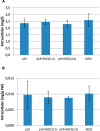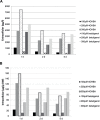Bioconversion to Raspberry Ketone is Achieved by Several Non-related Plant Cell Cultures
- PMID: 26635853
- PMCID: PMC4656793
- DOI: 10.3389/fpls.2015.01035
Bioconversion to Raspberry Ketone is Achieved by Several Non-related Plant Cell Cultures
Abstract
Bioconversion, i.e., the use of biological systems to perform chemical changes in synthetic or natural compounds in mild conditions, is an attractive tool for the production of novel active or high-value compounds. Plant cells exhibit a vast biochemical potential, being able to transform a range of substances, including pharmaceutical ingredients and industrial by-products, via enzymatic processes. The use of plant cell cultures offers possibilities for contained and optimized production processes which can be applied in industrial scale. Raspberry ketone [4-(4-hydroxyphenyl)butan-2-one] is among the most interesting natural flavor compounds, due to its high demand and significant market value. The biosynthesis of this industrially relevant flavor compound is relatively well characterized, involving the condensation of 4-coumaryl-CoA and malonyl-CoA by Type III polyketide synthase to form a diketide, and the subsequent reduction catalyzed by an NADPH-dependent reductase. Raspberry ketone has been successfully produced by bioconversion using different hosts and precursors to establish more efficient and economical processes. In this work, we studied the effect of overexpressed RiZS1 in tobacco on precursor bioconversion to raspberry ketone. In addition, various wild type plant cell cultures were studied for their capacity to carry out the bioconversion to raspberry ketone using either 4-hydroxybenzalacetone or betuligenol as a substrate. Apparently plant cells possess rather widely distributed reductase activity capable of performing the bioconversion to raspberry ketone using cheap and readily available precursors.
Keywords: 4-hydroxybenzalacetone; betuligenol; bioconversion; plant cell culture; raspberry ketone.
Figures




References
-
- Angerosa F., d′Alessandro N., Konstantinou P., Di Giacinto L. (1995). GC-MS evaluation of phenolic compounds in virgin olive oil. J. Agric. Food Chem. 43 1802–1807. 10.1021/jf00055a010 - DOI
-
- Chattopadhyay S. K., Sharma R. P., Kumar S. (2001). Process for the Production of 4-aryl-2-Butanols from Taxus wallichiana. US Patent 6184367.
-
- Dumont B., Hugueny P., Belin J. M. (1996). Production Par Bioconversion de Cétone Framboise. European Patent EP 0, 072A1.
LinkOut - more resources
Full Text Sources
Other Literature Sources

